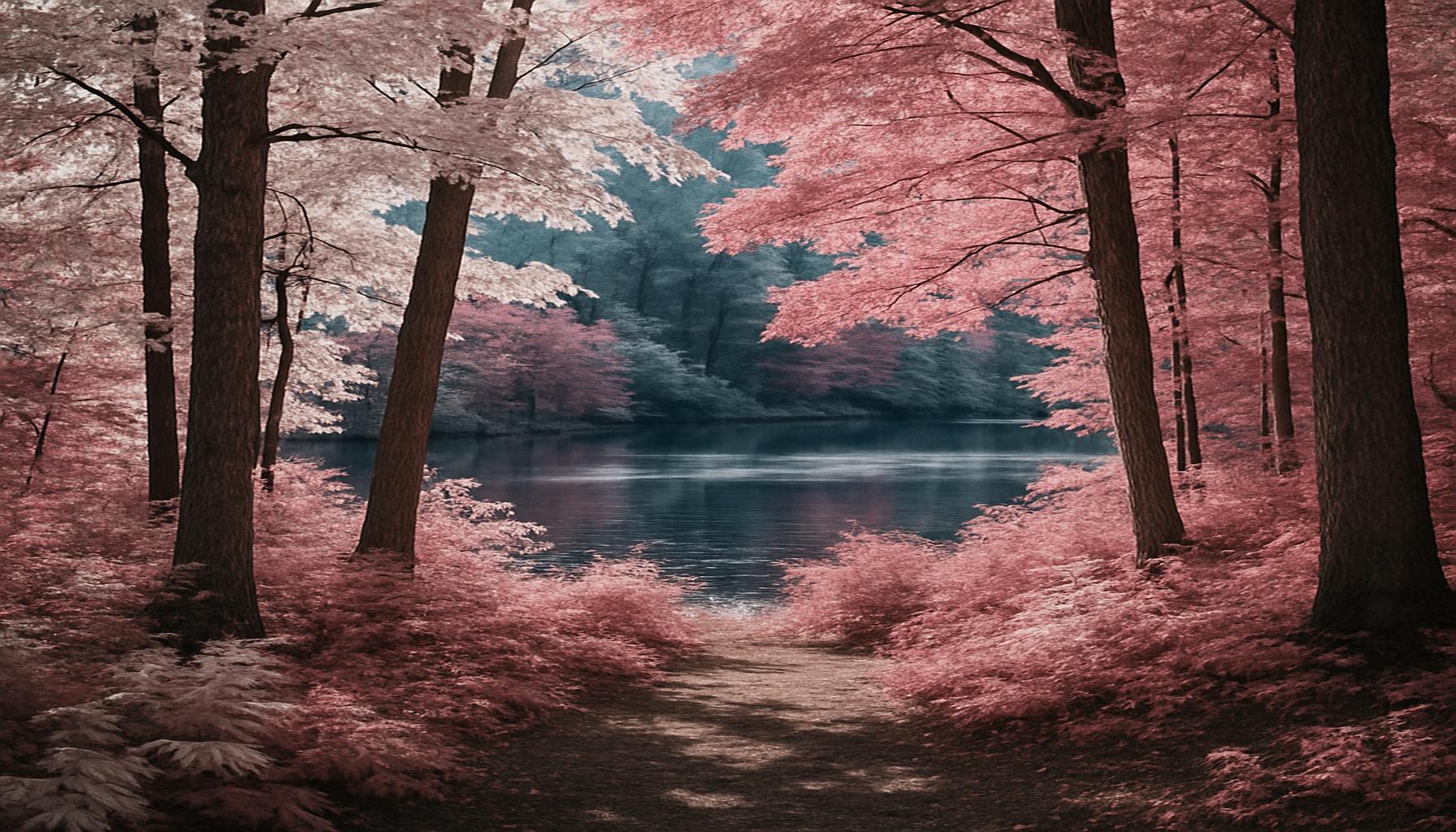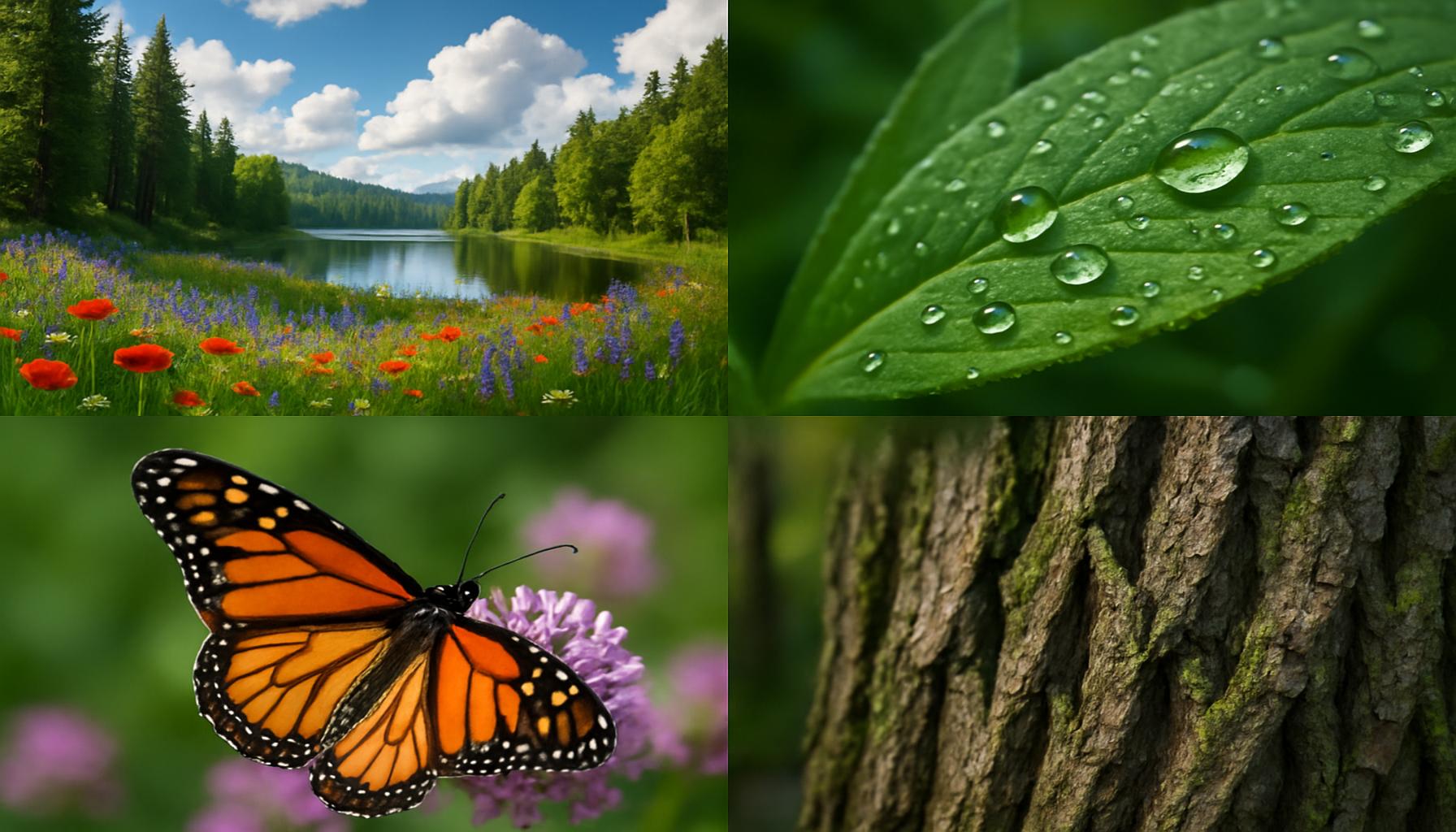Infrared Photography: Exploring an Invisible World Through the Lens

Unveiling Hidden Dimensions in Photography
Imagine capturing a moment where reality intertwines with fantasy, revealing a captivating world that lies just beyond human perception. Infrared photography is a fascinating medium that allows photographers to delve into wavelengths beyond the visible spectrum, transforming mundane scenes into breathtaking art pieces. By embracing this technique, artists can unveil the unseen aspects of the environment, giving a fresh perspective on familiar landscapes.
So, what exactly makes infrared photography so captivating? Here are several compelling attributes that draw photographers and viewers alike into its allure:
- Spectacular Color Shifts: One of the most striking features of infrared photography is the way it renders foliage in bright whites, while skies are transformed into deep, moody blues or eerie blacks. For instance, a standard image of a green forest can evolve into a surreal dreamscape, complete with luminescent trees that seem to glow against a starkly contrasting sky.
- Unique Textures: Infrared captures textures with a level of clarity that often goes unnoticed. Cloud formations become dramatic, and vegetation displays intricate patterns, allowing photographers to focus not just on images but also on the nuances in textures that lend depth to their work.
- Emotional Impact: The ethereal quality of infrared images often evokes feelings of mystery and surrealism. Scenes that might initially appear ordinary can create an emotional response that prompts viewers to question their perceptions of reality. The best infrared works can transport audiences into a different realm entirely, inviting them to explore the hidden depths of their imagination.
For both amateur enthusiasts and seasoned professionals, mastering infrared photography presents an opportunity to capture vibrant landscapes and powerful portraits that challenge conventional visual notions. This technique not only enhances the aesthetic appeal of the images but also invites experimentation and creativity.
Whether you find yourself wandering through a quiet park, capturing reflections in a serene pond, or exploring the rush of an urban environment, the transformative power of infrared can elevate your photography to a new artistic plane. By delving into this invisible world, you open the door to limitless creative possibilities that can redefine the way you see and capture the world around you.
What sets infrared photography apart is its ability to impose an alternate perspective on familiar settings, encouraging viewers to reevaluate their own experiences and interactions with everyday landscapes. By taking the time to experiment with this unique form of art, photographers can further discover the various applications of infrared technology, from landscape photography to more intimate portrait sessions, ultimately leading to a deeper appreciation of the beauty that often goes unnoticed.

DISCOVER MORE: Click here to learn how therapeutic knitting can enhance your well-being
The Science Behind Infrared Photography
Infrared photography operates on the principles of capturing wavelengths of light outside the visible spectrum, specifically in the infrared range, which begins around 700 nanometers and continues into the thousands. While our eyes can discern a range of colors from violet to red, infrared photography taps into a world where traditional hues lose their meaning, allowing capturing of what the human eye cannot see. This transformation is primarily facilitated by specialized cameras or filters that block visible light, enabling the sensor to register infrared wavelengths.
There are two primary ways to engage with infrared photography: using modified digital cameras or employing infrared film. Modified cameras have had their internal filters altered, enabling them to capture infrared light directly, while infrared film has long been a traditional medium used by photographers seeking to explore this unique visual realm. Each method presents its own advantages and challenges, appealing to a diverse audience with varying degrees of technical expertise and artistic vision.
Essential Equipment for Infrared Photography
Embarking on the journey into infrared photography requires specific equipment that optimizes the potential of this intriguing technique. Here’s a list of essentials:
- Infrared-Sensitive Camera: Whether it is a dedicated infrared camera or a modified conventional digital camera, the right sensitivity is crucial for capturing those unseen spectra.
- Infrared Filters: If using standard cameras, infrared filters are necessary to block visible light and allow only infrared wavelengths to reach the camera sensor. Popular choices include the 720nm or 850nm filters, each producing distinct visual effects.
- Tripod: As infrared photography typically requires longer exposures, especially when shooting landscapes, a sturdy tripod is essential for stabilizing the camera and ensuring sharp images.
- Post-Processing Software: Infrared images often require post-processing to fully realize their potential. Software like Adobe Lightroom or Photoshop enables photographers to enhance colors, adjust contrast, and correct any color casts for the desired aesthetic.
Entering the domain of infrared photography not only demands a distinct set of technical tools but also a willingness to experiment and interpret existing landscapes through a radically different lens. The process often involves a steep learning curve, yet it cultivates a deeper understanding of light and composition, complementing traditional photography skills.
As photographers embark on this adventure, they discover that the world around them becomes a playground for exploration, where predetermined notions of beauty and nuanced subtleties coalesce into artistry. With this understanding, you are now equipped to traverse the invisible wavelengths and begin unveiling the hidden wonders that await in infrared photography.
| Advantage | Description |
|---|---|
| Unique Perspectives | Infrared photography allows photographers to capture scenes in ways that visible light cannot, revealing hidden details and textures. |
| Enhanced Mood | The ethereal qualities of infrared images can evoke strong emotions, transforming ordinary scenes into surreal masterpieces that captivate viewers. |
Exploring the Invisible
As we delve deeper into the realm of infrared photography, we discover that it not only shifts our perception of the visible world but also opens new avenues for creativity. Photographers often express their unique artistic vision through this medium, producing work that challenges traditional boundaries of art and representation.The science behind infrared photography is equally fascinating. Using specialized filters or modified cameras, photographers can capture wavelengths beyond human sight, which can reveal a world filled with striking contrasts, especially in landscapes and foliage where the infrared signature of plants is pronounced. This distinct representation helps convey a sense of place that standard images sometimes fail to achieve, enriching the narrative behind each photograph.Moreover, infrared photography is not just an artistic endeavor; it also plays a significant role in areas such as environmental monitoring, agriculture, and conservation. By revealing variations in vegetation health, this technique assists in scientific studies, making it a valuable tool in our quest to understand and protect the natural world. If you’re curious about how to embark on this captivating journey of exploration, consider experimenting with the available tools or taking a workshop dedicated to infrared techniques. The potential for creativity and discovery in this captivating corner of photography is limitless.
DISCOVER MORE: Click here to learn about the mental health benefits of art therapy
Unveiling the Aesthetics of Infrared Photography
Infrared photography transcends mere technical execution; it unveils an aesthetic that redefines the visual experience. The most striking characteristic of infrared images is the unique tonal contrasts that emerge, giving landscapes an ethereal quality. Green foliage, for instance, often appears pure white due to its high reflectance of infrared light, transforming lush, verdant settings into dreamlike vistas. Conversely, elements like water and stones tend to absorb infrared wavelengths, resulting in darker tones that enhance the dramatic impact of compositions.
One compelling aspect of infrared photography is its ability to capture the true essence of nature in unexpected ways. Consider the iconic scenes of Joshua Tree National Park or the Great Smoky Mountains—areas renowned for their stunning beauty. Through an infrared lens, ordinary trees take on surreal, almost otherworldly forms, while cloud patterns become accentuated, leading to sky compositions that have a narrative quality all their own. Such effects foster an imaginative connection, allowing viewers to experience these landscapes as if they are peering into a parallel universe.
Color Versatility in Infrared Photography
Infrared photography is not confined to monochromatic hues; it encompasses a variety of color interpretations depending on the filters used and the post-processing techniques applied. With an infrared filter, photographers may discover a palette that includes vibrant blues, deep blacks, and striking reds that are rarely seen in traditional photography. Utilizing software like Adobe Lightroom enables photographers to push the boundaries of their creativity by manipulating colors, leading to vibrant images that echo a painter’s artistic choices rather than a mere photographic representation.
Moreover, some photographers opt for a false color approach, which involves assigning different colors to different infrared wavelengths through digital manipulation. This technique can yield striking contrasts and vivid visuals that enhance narrative qualities. An image of a field of flowers may transform into a kaleidoscope of colors, presenting a surreal but fascinating perspective of familiar landscapes.
Applications Beyond Aesthetics
The applications of infrared photography stretch far beyond the realm of artistic expression, serving as invaluable tools in various fields. In architectural photography, for example, infrared imaging can reveal thermal patterns, allowing architects and engineers to identify insulation deficiencies and heat loss in buildings unnoticed by the naked eye. This practical aspect of infrared photography not only enhances the efficiency of construction projects but also informs sustainable practices in architecture.
Additionally, in the environmental sciences, infrared photography is used to monitor vegetation health and growth patterns. The distinctive reflectance properties of plants in infrared spectra allow researchers to effectively assess agricultural crops and track changes in ecosystems over time. Such applications highlight the generative potential of infrared technology in cultivating a deeper understanding of our environment.
As photographers hone their skills in this mesmerizing technique, they often discover a heightened sensitivity to both tangible landscapes and conceptual frameworks. Infrared photography encourages artists to interact with their surroundings differently and invites viewers to explore visual narratives that may be overlooked in conventional imagery.
DIVE DEEPER: Click here to uncover the beauty in everyday life
Conclusion: The Infinite Potential of Infrared Photography
As we delve into the world of infrared photography, it becomes evident that this unique form of imaging offers a remarkable lens through which to explore and interpret our surroundings. The ability to capture enchanting landscapes that appear almost otherworldly creates a visual experience that is both transcendent and thought-provoking. By transforming the mundane into the extraordinary, infrared photography not only challenges our perceptions but also invites us to reimagine the familiar realms of nature and architecture.
Moreover, the practical applications of infrared photography extend its relevance far beyond creating visually stunning images. It serves as a vital tool in environmental sciences and architecture, making significant contributions to sustainability and ecological understanding. This duality of function and artistry enhances the value of infrared photography, revealing its capacity to bridge the gap between aesthetic expression and scientific inquiry.
As photographers and artists continue to push the boundaries of this technique, their work encourages both creators and viewers alike to engage with nature in new and meaningful ways. The captivating visuals of infrared photography reveal a hidden narrative—an invitation to explore the invisible world that lies just beyond our perception. For those interested in exploring this unique medium, the journey promises not just to sharpen technical skills but to expand one’s understanding of the extraordinary beauty that exists in our everyday environments.
Whether you are a seasoned professional or an enthusiastic beginner, infrared photography opens up a realm of infinite possibilities. It invites everyone to step out and discover, framing our perception of nature and the built environment through an intriguing lens that challenges tradition and ignites creativity.



